Start Your Journey: Mindful Hiking Techniques for Beginners
Chosen theme: Mindful Hiking Techniques for Beginners. Step onto the trail with presence, patience, and curiosity. This welcoming guide helps you slow down, breathe deeper, and notice more—from your footsteps to the wind in the trees. Join our mindful trail community, share your first impressions in the comments, and subscribe for weekly prompts that keep your practice grounded and joyful.
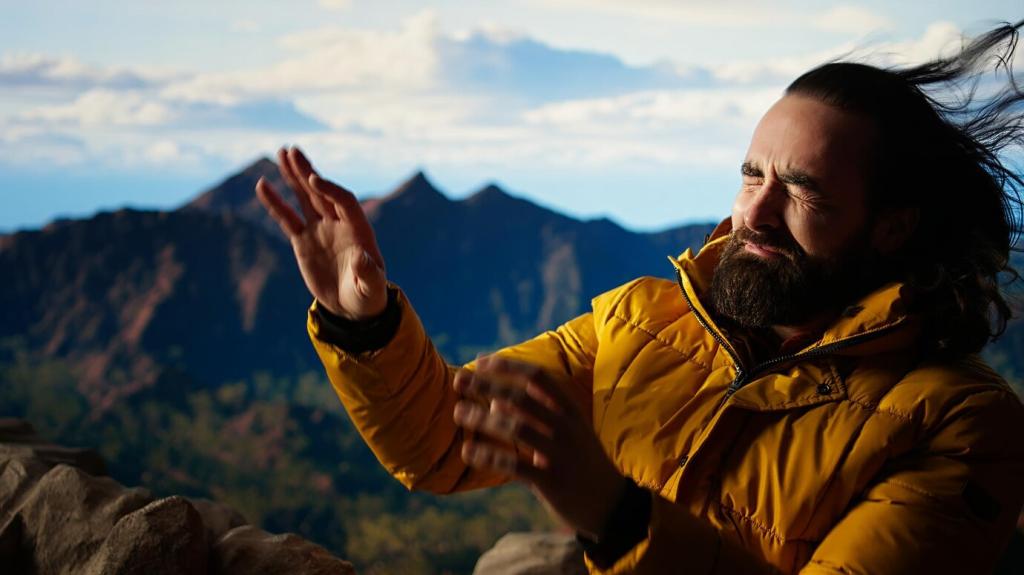
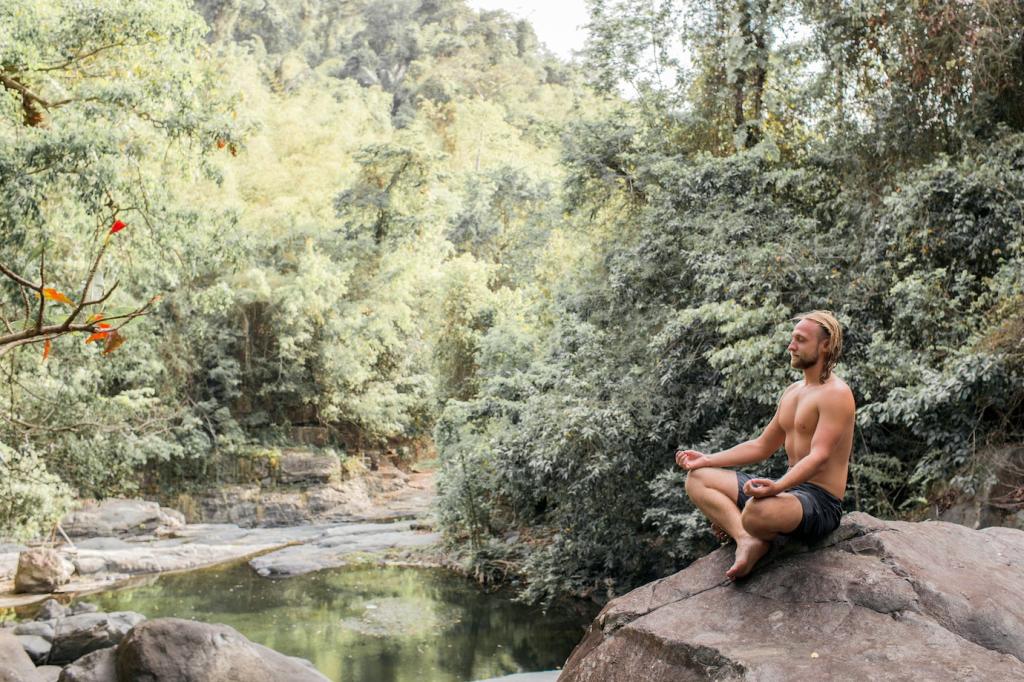
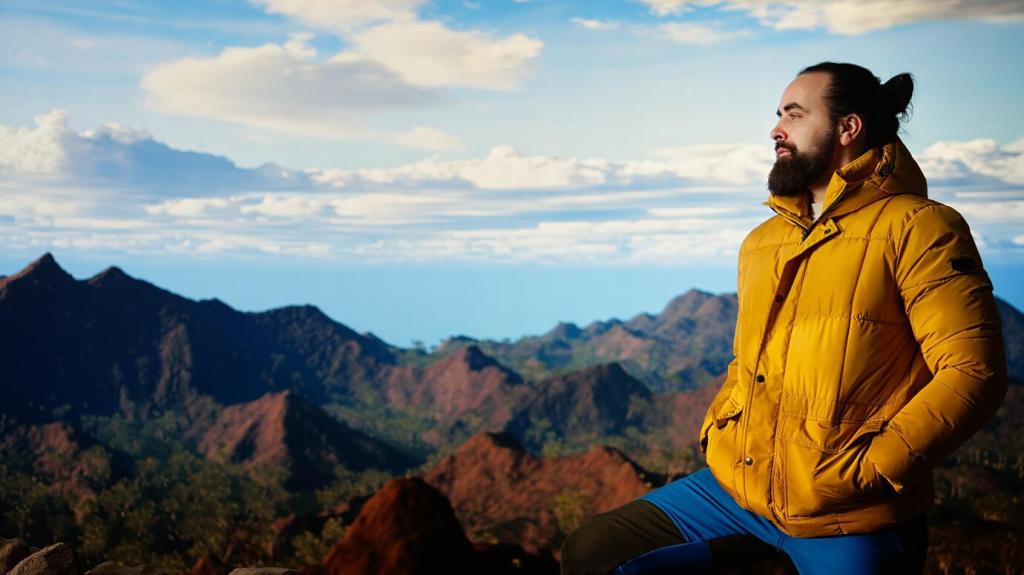
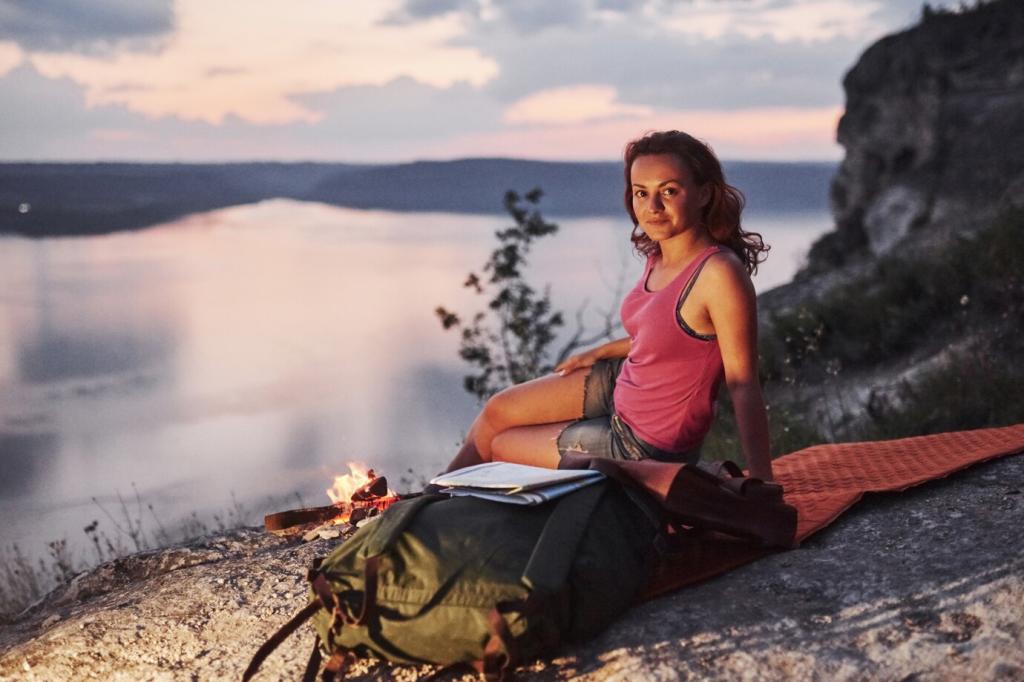
Footwear That Listens
Choose shoes that fit snugly yet allow natural toe splay, paired with moisture-wicking socks. Notice how the sole grips rock and roots, how your foot rolls heel to toe. Let comfort guide your pace. Share which sensations—springy, stable, cushioned—tell you your shoes are right.
Water, Sipped with Awareness
Hydrate regularly rather than waiting for thirst. Pause to take three mindful sips, noticing coolness, swallow, and gratitude for the source. Use a reusable bottle you enjoy handling. What reminder helps you drink consistently—a watch timer, trail landmarks, or the sun’s position?
Body Awareness on the Trail
Posture That Opens Breath
Let your gaze soften ahead, crown lifting as if a string floats you taller. Relax your shoulders, widen the collarbones, and let arms swing easy. This single shift often brightens mood, increases airflow, and calms effort. Practice for five minutes, then share how your breath changed.
Soft Knees, Quiet Feet
On descents, keep a gentle bend in the knees, shorten stride, and land softly to reduce impact. Roll through your foot rather than stomping, and let gravity guide rather than pull. After one downhill with this technique, tell us how your joints and confidence felt.
Signals, Not Alarms
Differentiate discomfort from danger with a quick 1–10 check-in. Adjust when tightness whispers, not when pain shouts. Luis once paused at “4” hot spots, swapped socks, and avoided a blister entirely. What early signal do you promise to honor on your next hike?
Nature as Teacher: Senses and Stillness
Stop once every mile for sixty seconds. Name three distant sounds and three near sounds—the wind’s hum, a jay’s call, your jacket’s rustle. This resets attention and deepens place connection. Try it today and comment with the most surprising sound you discovered.
Nature as Teacher: Senses and Stillness
Safely explore textures—rough bark, cool rock, springy moss—without disturbing living surfaces. Describe each with three adjectives: gritty, veined, velvety. Texture noticing slows the mind and steadies steps. Leave nothing but footprints, and share your favorite tactile discovery after the hike.
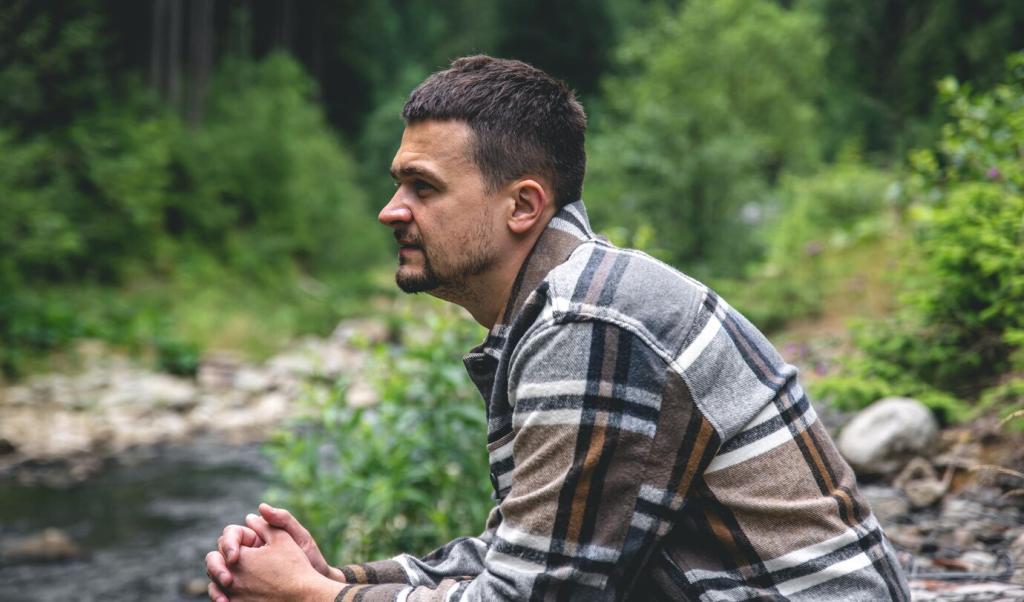
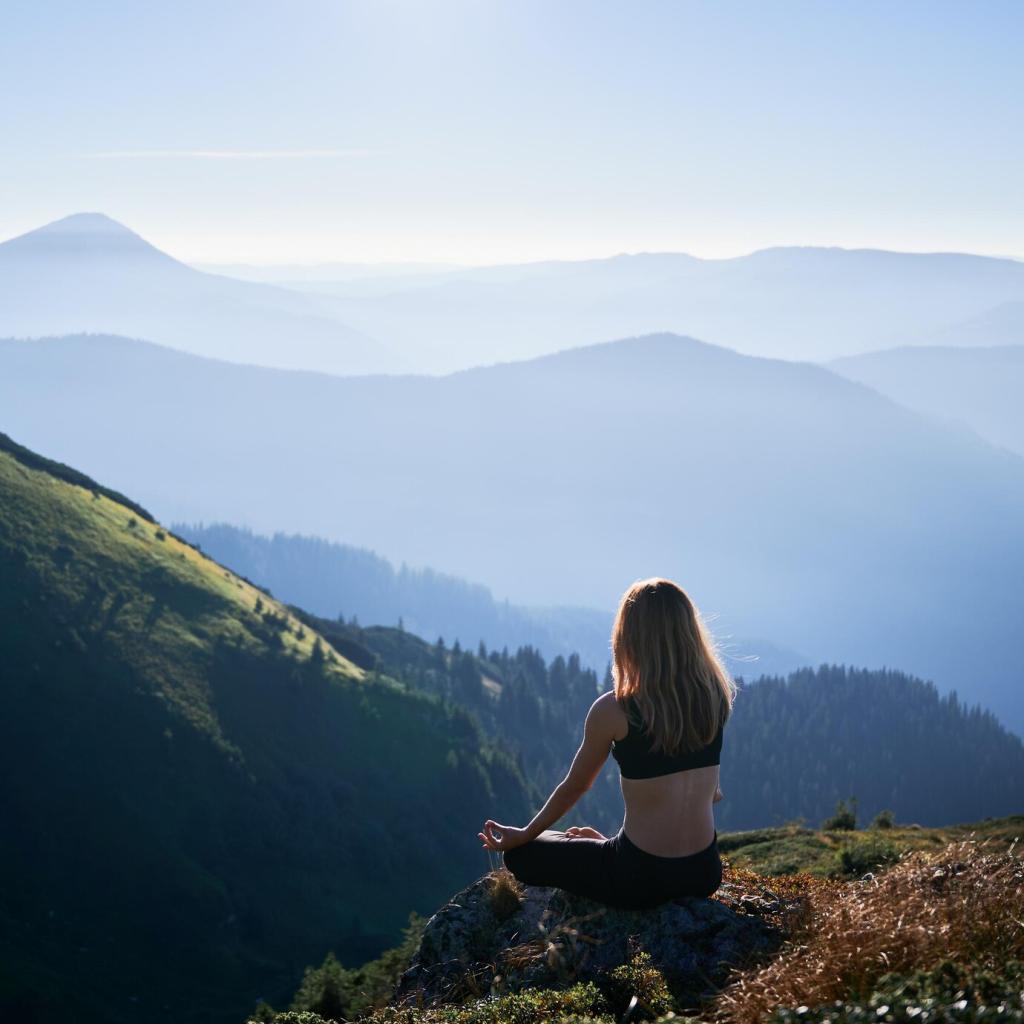
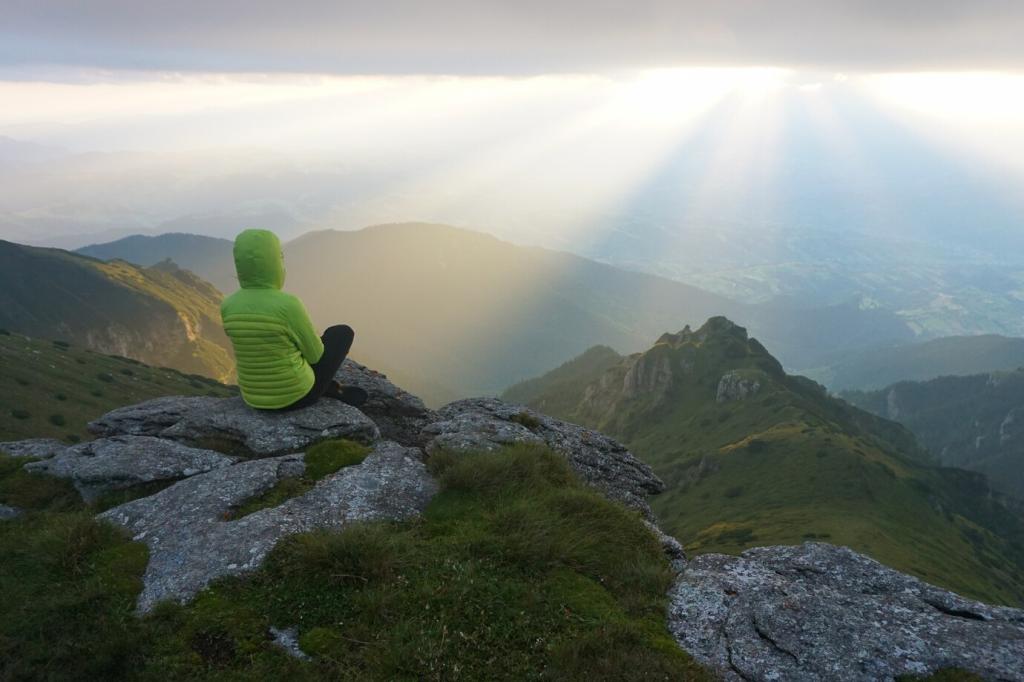
Choose a Beginner-Friendly Route
Start with a loop under five miles, modest elevation, and mostly soft surfaces. Read recent reports, check maps, and identify bail-out options. When the route feels friendly, your mind relaxes. Comment with a local beginner trail you recommend and why it feels welcoming.
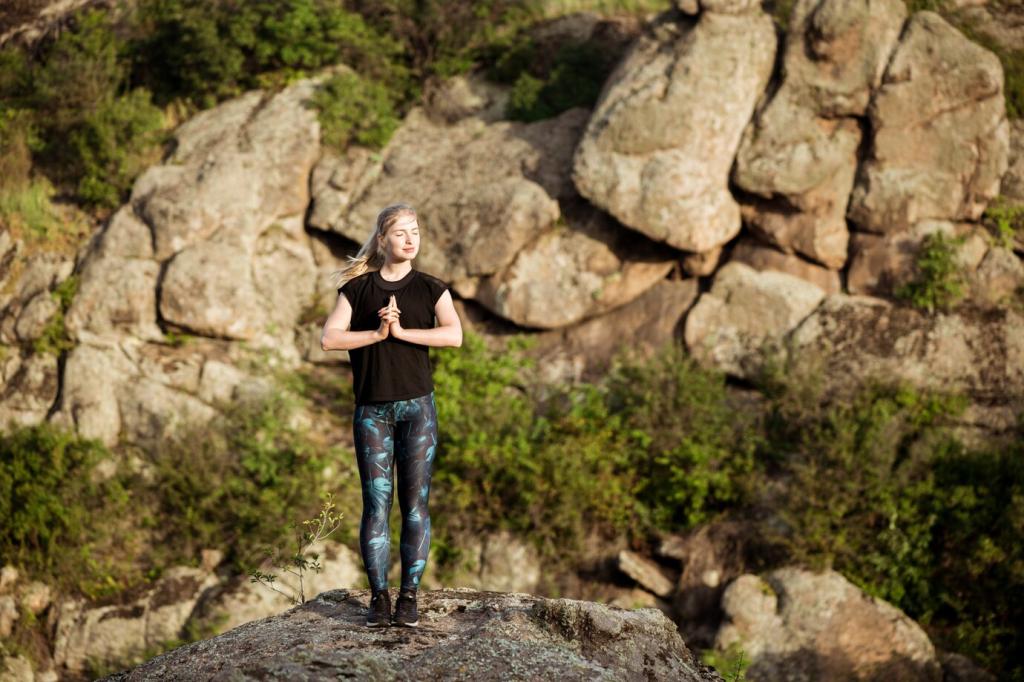
Timing for Quiet
Aim for early morning or weekday afternoons to meet fewer crowds and more birdsong. Watch weather windows and daylight length; pack a small headlamp just in case. Begin with a sigh-of-relief breath at the trailhead, then share your favorite first-light sensory detail.
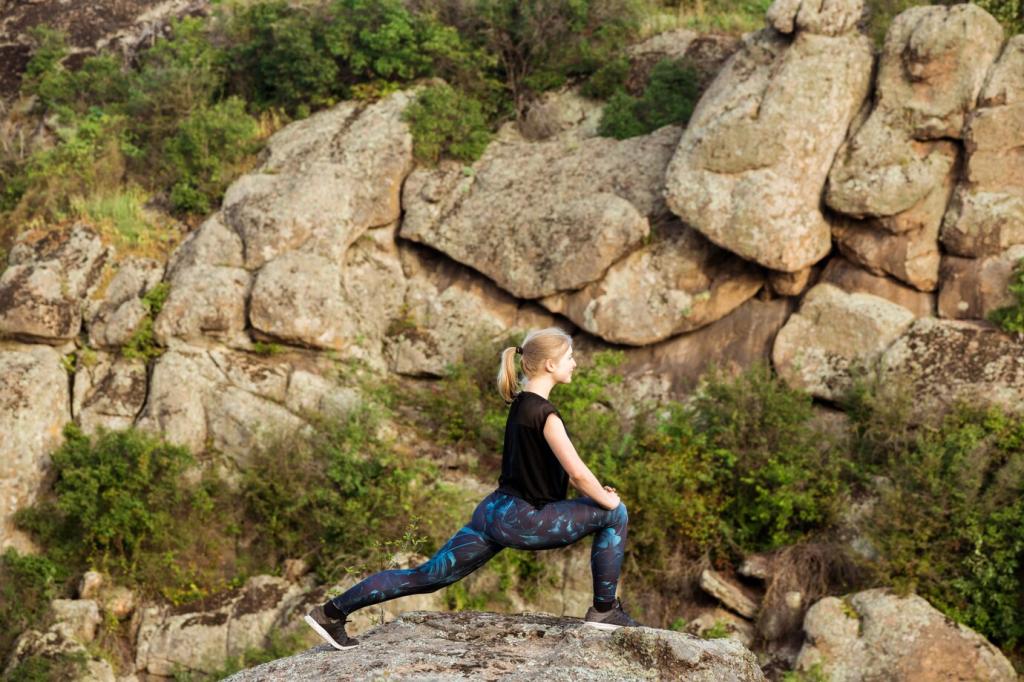
Go Solo or With a Mindful Buddy
Solo hikes build self-trust; mindful partners build accountability. Agree on quiet intervals, re-group spots, and a simple safety text plan. Celebrate the slowest pace needed. Tag the friend you’ll invite next time, and subscribe for our downloadable mindful pre-hike checklist.
